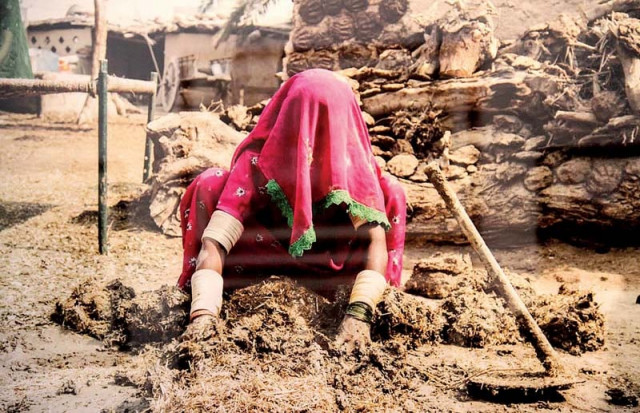Life in photos: Exhibition showcases rehabilitation after calamity
Participants say multi-sectoral interventions needed to curb malnutrition

The photographs showed lives of the people in Sindh and how the inter-sectoral approach had been effective in improving their lives. PHOTO: INP
A photographic exhibition on Monday showcased the outcome and progress of humanitarian efforts of Pakistan Emergency Food Security Alliance (Pefsa) in helping the affectees of the 2010 floods in Sindh.
The event, titled ‘Saving Lives, Spreading Smiles’, was organised by Pefsa, in collaboration with Black Box at Pakistan National Council of the Arts (PNCA) to show solidarity with the people of Sindh, especially women and children, who were victims of food insecurity and malnutrition.

The photographs showed lives of the people in Sindh and how the inter-sectoral approach had been effective in improving their lives.
The exhibition also included pictures of women and children using proper sanitary methods, men investing in shop supplies and latrine installments. It showed the rehabilitation of numerous families in the region who had been victims of one of the worst calamities Pakistan has seen to-date.
Participants mentioned that lack of nutrition in Sindh is a multidimensional problem with many direct and underlying causes. It therefore requires multi-sectoral interventions and alignment of activities for a sustained impact on nutrition outcomes, they said.
To address the issue of under-nutrition in Sindh, Pefsa implemented a nutrition-sensitive programme in Sanghar and Badin districts. The project focused on treatment of malnutrition, water-borne diseases, and ensuring food security in targeted communities with positive impacts on nutrition status.
“Pefsa, with the support of European Union Humanitarian Aid and Civil Protection department has been implementing nutrition sensitive programmes to overcome malnutrition and food security in Pakistan, particularly in Sindh,” said Oxfam Country Director Arif Jabbar Khan.
“The integrated approach better helped to reduce the prevalence of acute under-nutrition among children under 5 and improved the nutritional status of mother and children,” he explained.
“Although we have reached a million people, it is still only a drop in the ocean and there is a long way ahead. So many children are suffering due to causes which can easily be prevented and addressed with effective public policy interventions,” Khan added.
After the floods in Sindh in late July 2010, resulting from heavy monsoon rains that affected the Indus River Basin, six INGO’s formed a consortium which led to the emergence of Pefsa.
The floods caused approximately one-fifth of Pakistan’s total land to come underwater, affecting 20 million people by destruction of property, livelihood and infrastructure.
Published in The Express Tribune, August 11th, 2015.



















COMMENTS
Comments are moderated and generally will be posted if they are on-topic and not abusive.
For more information, please see our Comments FAQ